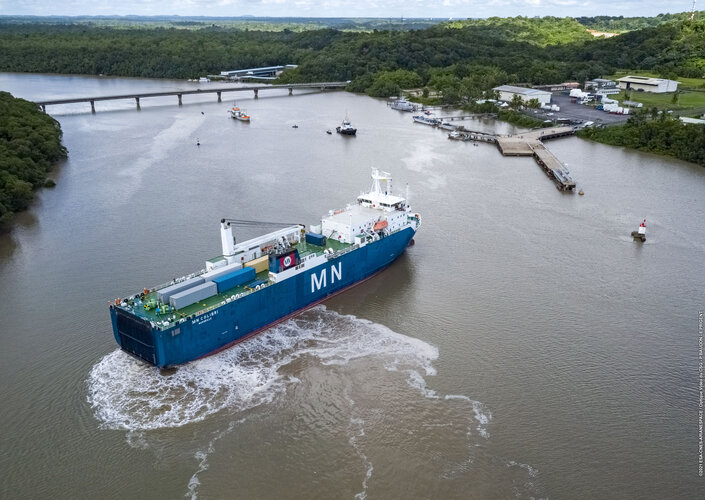The future is here: Advanced Manufacturing for space
Wednesday, 13 October 2021 05:30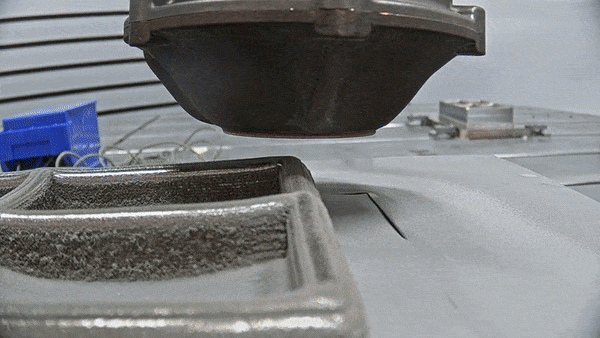
To go to new places in space, or do new things, usually demands innovative technologies, and often novel materials and manufacturing techniques as well. So ESA and NASA have teamed up to support a major international conference on Advanced Manufacturing – bringing together Industry 4.0 with Space 4.0.
Tethered satellites for propulsion without fuel
Wednesday, 13 October 2021 05:24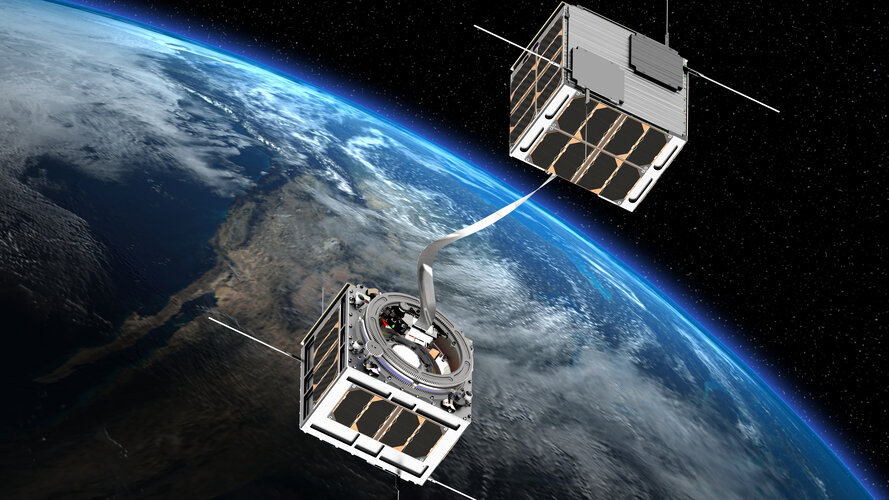 Image:
Tethered satellites for propulsion without fuel
Image:
Tethered satellites for propulsion without fuel Maxar files protest over Space Development Agency’s satellite procurement
Tuesday, 12 October 2021 21:47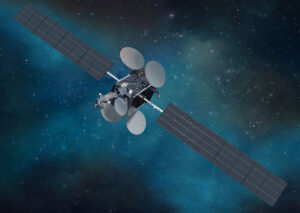
Maxar Technologies filed a protest with the Government Accountability Office Oct. 8 challenging a Space Development Agency solicitation seeking industry bids for 126 satellites.
Celebrate Virtual International Observe the Moon Night with NASA
Tuesday, 12 October 2021 17:48 The public is invited to participate in several of NASA’s virtual activities in celebration of International Observe the Moon Night on Saturday, Oct. 16.
The public is invited to participate in several of NASA’s virtual activities in celebration of International Observe the Moon Night on Saturday, Oct. 16. Planet announces plans for new fleet of Earth observation satellites
Tuesday, 12 October 2021 16:04
Satellite data provider Planet announced Tuesday that it plans to launch a new fleet of orbiting eyes so powerful they can distinguish road markings on the ground.
Planet, which already operates 200 Earth observation satellites from space, wants to make the new function available in 2023.
The new satellites, called Pelican, could be used for mapping services, such as Google maps; in environmental tasks, such as spotting illegal forest clearers or observing crops; and in defense to monitor troop movements and airport activity.
"The data is faster, it's higher resolution, it's lower latency, it's more on demand," Robbie Schingler, a former NASA engineer who co-founded Planet in 2010, told AFP. "It's a whole new satellite."
The announcement, made at the company's annual conference, underlines the dynamism of the booming nanosatellite market.
NASA's Webb space telescope arrives in French Guiana after sea voyage
Tuesday, 12 October 2021 16:01
NASA's James Webb Space Telescope successfully arrived in French Guiana Tuesday, after a 16-day journey at sea. The 1,500-mile voyage took Webb from California through the Panama Canal to Port de Pariacabo on the Kourou River in French Guiana, on the northeastern coast of South America.
The world's largest and most complex space science observatory will now be driven to its launch site, Europe's Spaceport in Kourou, where it will begin two months of operational preparations before its launch on an Ariane 5 rocket, scheduled for Dec. 18.
Once operational, Webb will reveal insights about all phases of cosmic history—back to just after the big bang—and will help search for signs of potential habitability among the thousands of exoplanets scientists have discovered in recent years.
With first Martian samples packed, Perseverance initiates remarkable sample return mission
Tuesday, 12 October 2021 16:00
NASA, along with the European Space Agency, is developing a campaign to return the Martian samples to Earth.
On Sept. 1, NASA's Perseverance rover unfurled its arm, placed a drill bit at the Martian surface, and drilled about 2 inches, or 6 centimeters, down to extract a rock core. The rover later sealed the rock core in its tube. This historic event marked the first time a spacecraft packed up a rock sample from another planet that could be returned to Earth by future spacecraft.
Mars Sample Return is a multi-mission campaign designed to retrieve the cores Perseverance will collect over the next several years.
National Reconnaissance Office releases solicitation for commercial space radar imagery
Tuesday, 12 October 2021 15:16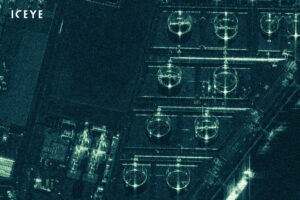
The National Reconnaissance Office on Oct. 12 published its first solicitation for commercial space radar imagery.
ESO images some of the biggest asteroids in our Solar System
Tuesday, 12 October 2021 15:05
NASA's Lucy spacecraft poised to launch Oct. 16
Tuesday, 12 October 2021 14:53
NASA's Lucy spacecraft is encapsulated in a protective fairing atop an Atlas V rocket, awaiting its 23-day launch window to open on October 16.
Planet unveils Pelican Earth-imaging constellation
Tuesday, 12 October 2021 14:30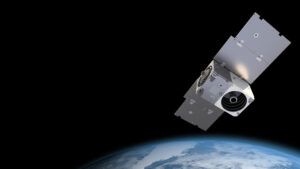
Planet unveiled “very high resolution” Pelican Earth-imaging satellites and announced plans to bring synthetic-aperture radar (SAR) into its Planet Fusion Monitoring data stream.
ESA welcomes Webb in French Guiana for launch on Ariane 5
Tuesday, 12 October 2021 14:00NASA’s Webb Space Telescope Arrives in French Guiana After Sea Voyage
Tuesday, 12 October 2021 14:00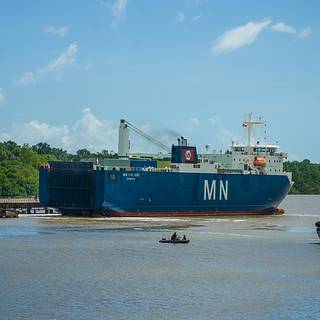 NASA’s James Webb Space Telescope successfully arrived in French Guiana Tuesday, after a 16-day journey at sea.
NASA’s James Webb Space Telescope successfully arrived in French Guiana Tuesday, after a 16-day journey at sea. India’s PM vows broader public-private space cooperation as OneWeb eyes Indian launches
Tuesday, 12 October 2021 13:38
India's prime minister said Oct. 11 his government will widen cooperation with industry, young innovators and startups to bring about “exponential innovation” in the country’s space sector. OneWeb, meanwhile, signaled its intent to launch its satellites aboard Indian rockets.
UAE appoints new director-general of national space agency
Tuesday, 12 October 2021 13:37
The United Arab Emirates named Salem Butti Salem Al Qubaisi to replace the founding director-general of the UAE Space Agency.

